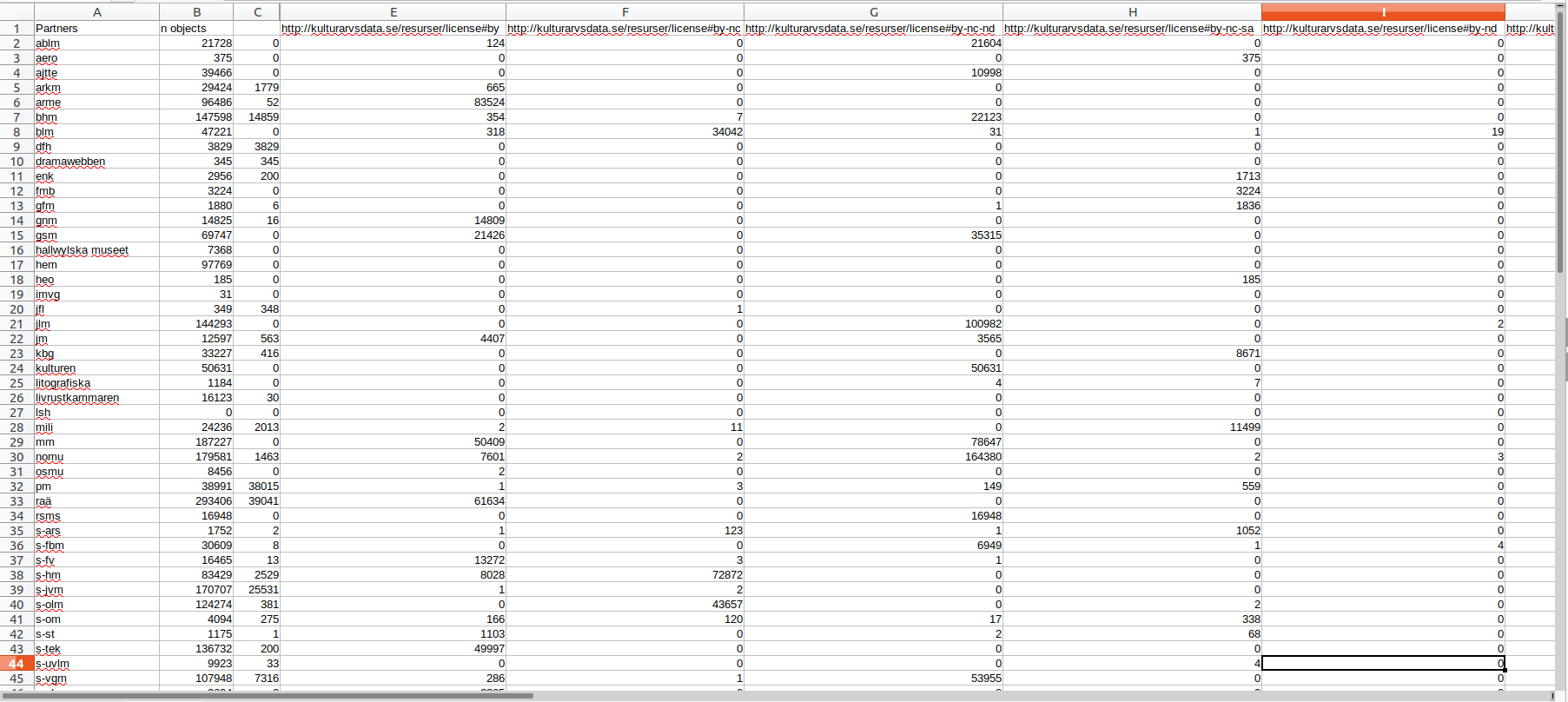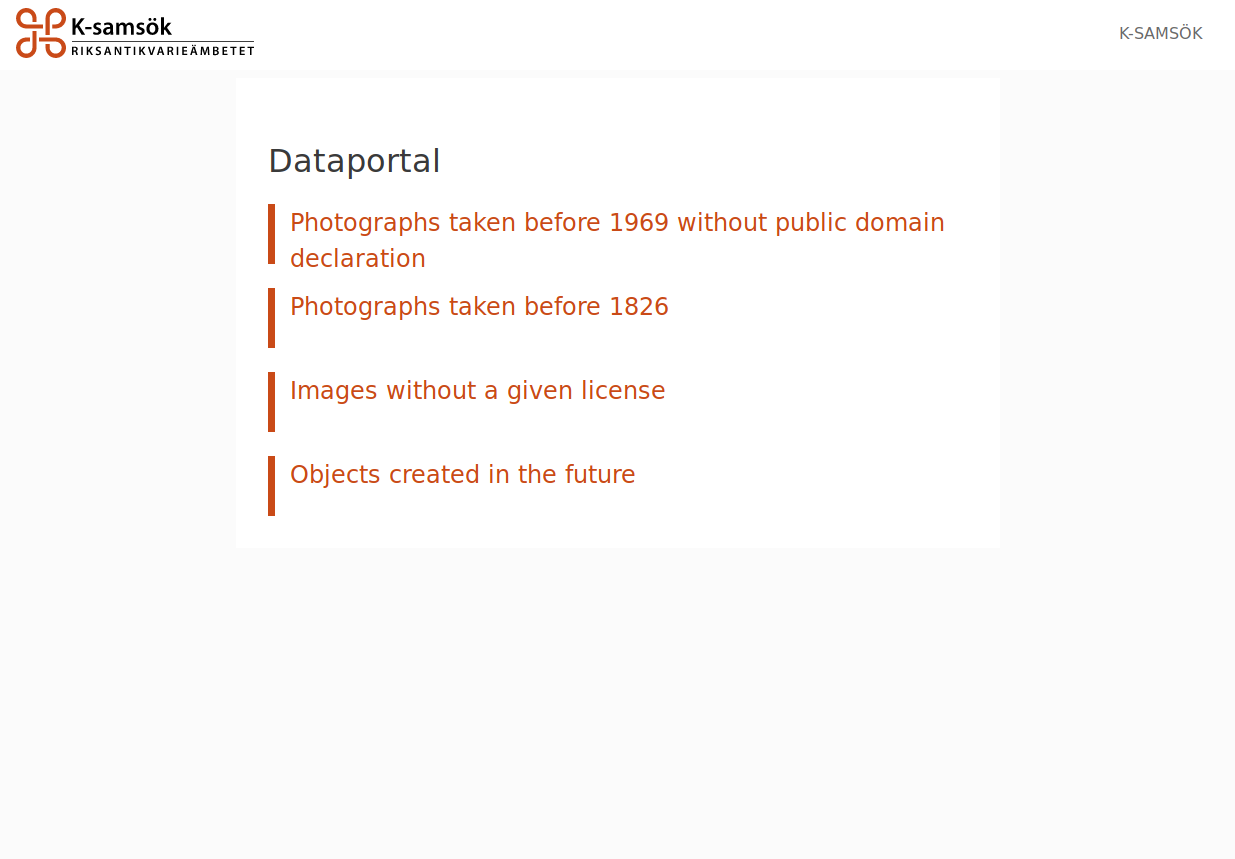An Actionable Approach to Data Quality for Cultural Heritage Institutions
30th October 2019In this post I’m introducing a new data quality portal that we are currently testing with the K-samsöks data partners. It’s a data quality tool without any percentages or metrics.
To solve data quality issues at cultural heritage institutions (or anywhere) two key things need to be achieved:
- Awareness - individuals need to be aware of the specific data quality issues present in their data.
- Actionability - individuals need to have the tooling and knowledge to find individual and fix quality issues.
The first one is something that aggregation actors have been targeting for a while through spreadsheets and percentages. The screenshot below shows the second(ish) iteration of our licensing statistics/issues spreadsheet that we share with data partners (the code behind it is written by my colleague Marcus and it’s open source).

Some institutions have been able to act upon the insights given by this, while others have not. A common issue is the lack of being able to query their own data, often this is because of lacking capabilities of collection management systems, sometimes it’s a combination of this and user knowledge. No matter what it’s a barrier.
Being an aggregator allows us to lower barriers for 70+ data partners so by curating and building a GUI around advanced queries. So instead of not being able to query their data or being stuck in writing some boolean and/or whatever query in their CMS they can now list problematic objects within a few clicks.

The current data quality queries available to data partners in the current proof of concept version of the data portal (we and partners have plenty of other ones in mind).

Following the selection of quality query and providing institution a list of problematic or possible problematic objects are presented to the user in a list containing a link back to the source page or CMS as well as other metadata that might be relevant for the given query.
In a couple of weeks it will be clear if this new approach have an impact. I know what I’m betting on.